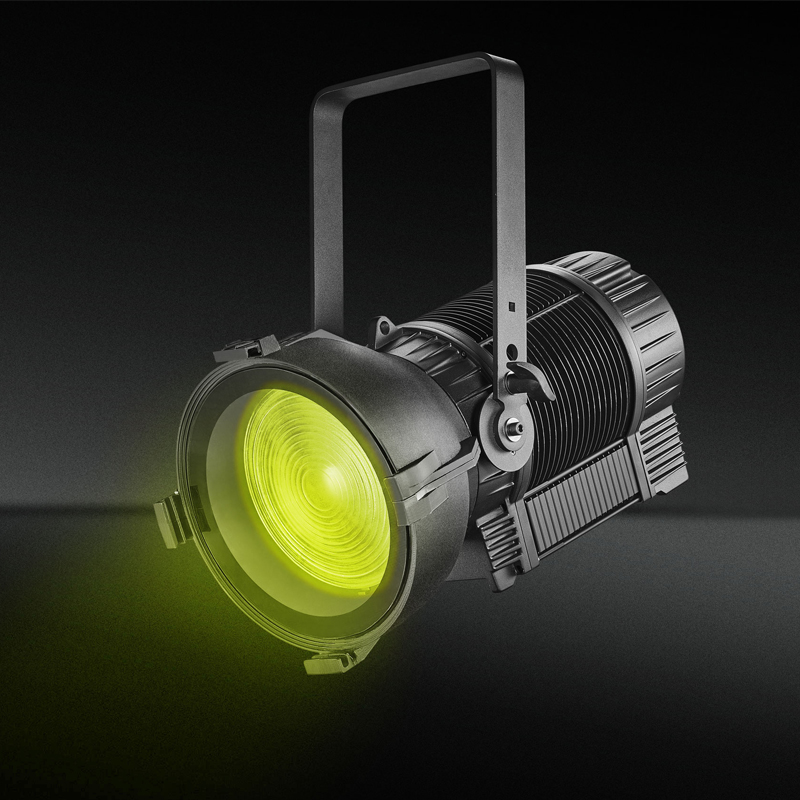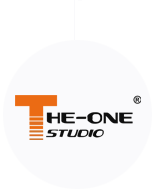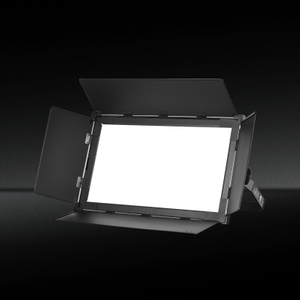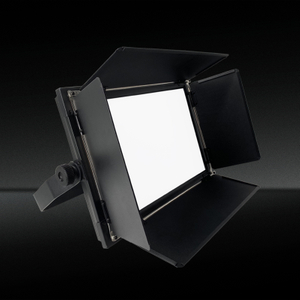







The Fresnel lens, named after its inventor Augustin-Jean Fresnel, revolutionized the way light could be focused and directed. It's an optical lens that allows for the creation of thin, lightweight lenses with powerful focusing capabilities. Used in various applications like lighting, lighthouses, and photography, the LED Fresnel light represents the modern version of this classic invention, bringing significant advancements in efficiency, size, and light quality.
Introduction to Fresnel Lenses
A Fresnel lens is a compact, flat lens that uses concentric circles (or sections) to achieve the effect of a much thicker lens while being lighter and more compact. Traditionally, these lenses were designed to capture and focus light, and they were frequently used in lighthouses to project a bright, focused beam over great distances.
The principle behind the Fresnel lens involves dividing the lens into a series of concentric, ridged sections. Each section functions as an individual refracting surface, allowing the lens to bend light in the same way a thicker lens would, but with a fraction of the material and weight.
How Does a Fresnel Lens Work?
Fresnel lenses operate by refracting light in such a way that the beam is directed toward a specific focal point. The concentric rings of the Fresnel lens each bend the light at slightly different angles, making it possible to focus the light without using the bulky materials that would typically be required in traditional lenses. This allows Fresnel lenses to achieve powerful light focus with reduced weight and size.
The Evolution to LED Fresnel Lights
With the advent of LED technology, traditional Fresnel lights have seen significant upgrades. LED Fresnel lights are commonly used in film production, photography, stage lighting, and architectural lighting due to their superior energy efficiency and brightness. LEDs have made it possible to create brighter, more reliable lighting systems, and the integration of LEDs into the Fresnel lens offers several benefits:
Compact size: LED technology allows for smaller, more efficient designs without compromising the performance of the Fresnel lens.
Energy efficiency: LED Fresnel lights consume significantly less energy than their incandescent counterparts, offering a more sustainable solution.
Longevity: LEDs are known for their extended lifespan, which reduces the need for frequent replacements and maintenance.

Key Benefits of LED Fresnel Lights
LED Fresnel lights come with numerous advantages, making them a popular choice for a range of applications:
Energy Efficiency
One of the most significant benefits of LED Fresnel lights is their energy efficiency. Unlike traditional incandescent lights, LEDs convert more energy into light rather than heat, making them an environmentally friendly option.
Brightness Control and Focus
LED Fresnel lights offer precise control over brightness and focus. The adjustable focus feature allows users to shape the light, adjusting it to meet the needs of various lighting scenarios, whether it’s in a theater or a photo shoot.
Durability and Long-Lasting Performance
LEDs have a significantly longer lifespan compared to incandescent bulbs. As a result, LED Fresnel lights require less frequent replacement, saving both money and time in the long run. The LED Fresnel light's durability makes it perfect for environments where lights are used frequently.
Compact Design and Versatility
The compact design of LED Fresnel lights allows them to fit into tight spaces without sacrificing performance. Their small form factor combined with their flexibility in focusing light has made them ideal for film, theater lighting, and architectural applications.
Superior Color Rendering
Another advantage of LED Fresnel lights is the ability to offer superior color rendering. This is crucial in environments such as film production and photography, where the accuracy of light and color is essential to the overall visual quality.
Applications of LED Fresnel Lights
The versatility of LED Fresnel lights has made them indispensable in various industries, such as:
Film and Television: LED Fresnel lights are widely used in film sets and TV studios for their ability to produce a soft yet powerful light that can be controlled to achieve various lighting effects.
Photography: In photography, LED Fresnel lights are favored for their adjustability and the quality of light they produce, offering photographers the control they need to achieve the perfect shot.
Theater Lighting: The adjustable beam and high intensity make LED Fresnel lights a staple in stage lighting, where flexible control of lighting intensity and focus is often required.
Architectural Lighting: LED Fresnel lights are also used in architectural settings to highlight key features of a building or space.
FAQs
What is the difference between LED Fresnel and traditional Fresnel lights?
LED Fresnel lights use LED bulbs, which are more energy-efficient and last longer compared to traditional incandescent bulbs used in older Fresnel lights. Additionally, LED Fresnel lights offer better color rendering and control over brightness and focus.
How does a Fresnel lens improve light projection?
The Fresnel lens improves light projection by concentrating and focusing the light into a beam. This is achieved by using concentric ridged rings that refract light at different angles, allowing the lens to project a powerful beam without the bulk of a traditional lens.
Are LED Fresnel lights suitable for outdoor use?
Yes, many LED Fresnel lights are designed for outdoor use and are built to withstand environmental elements such as rain, wind, and extreme temperatures. However, it’s important to check the specifications of the particular light for weatherproofing details.
What makes LED Fresnel lights more cost-effective in the long run?
LED Fresnel lights are more cost-effective due to their lower energy consumption and longer lifespan compared to traditional lighting options. The savings in energy costs and the reduced frequency of bulb replacements make them a more economical choice in the long term.
How do I maintain my LED Fresnel light?
To ensure optimal performance, it’s important to regularly clean the lens of the LED Fresnel light to remove dust and debris. Additionally, checking the mounting and focusing adjustments periodically can help maintain the quality of light produced.





